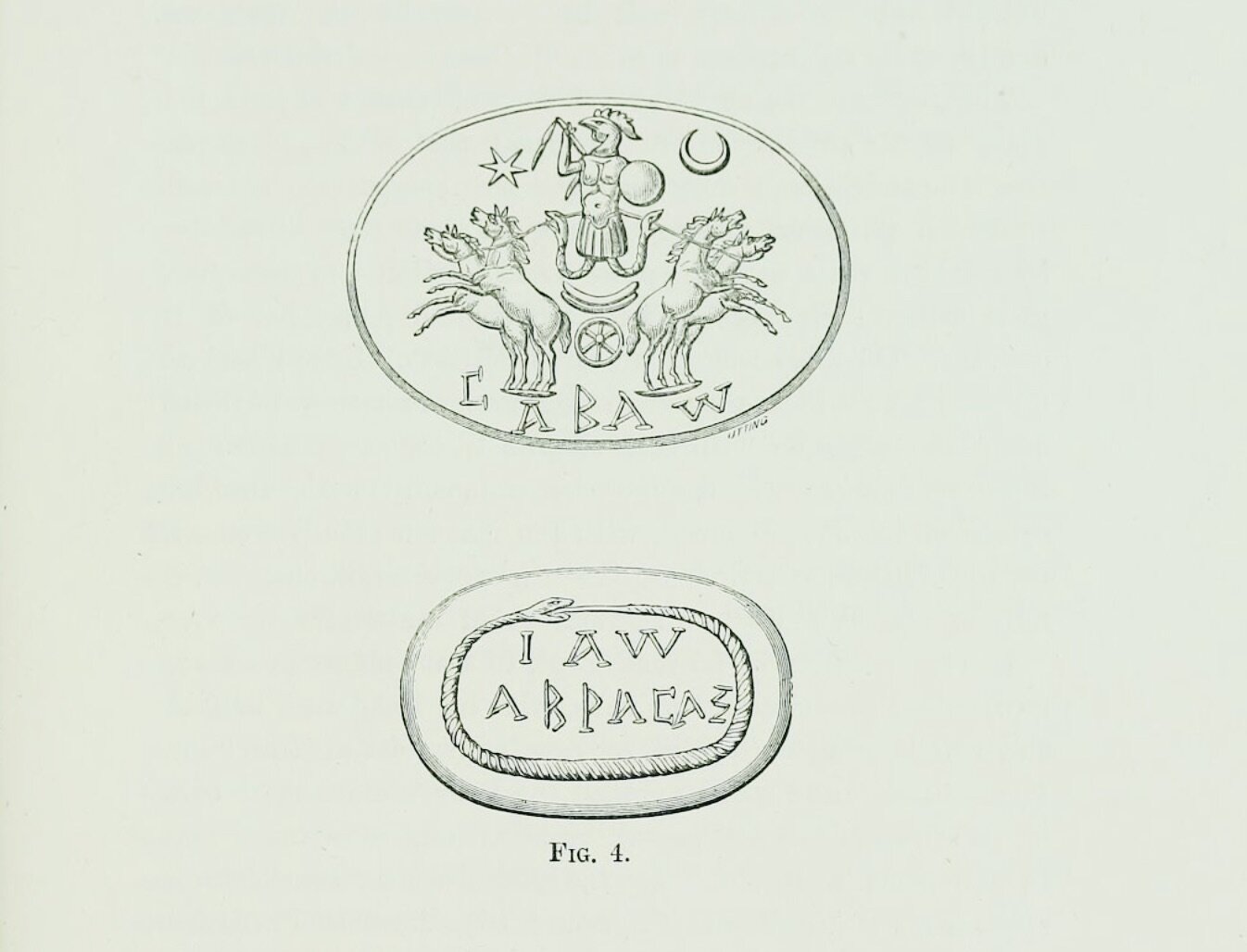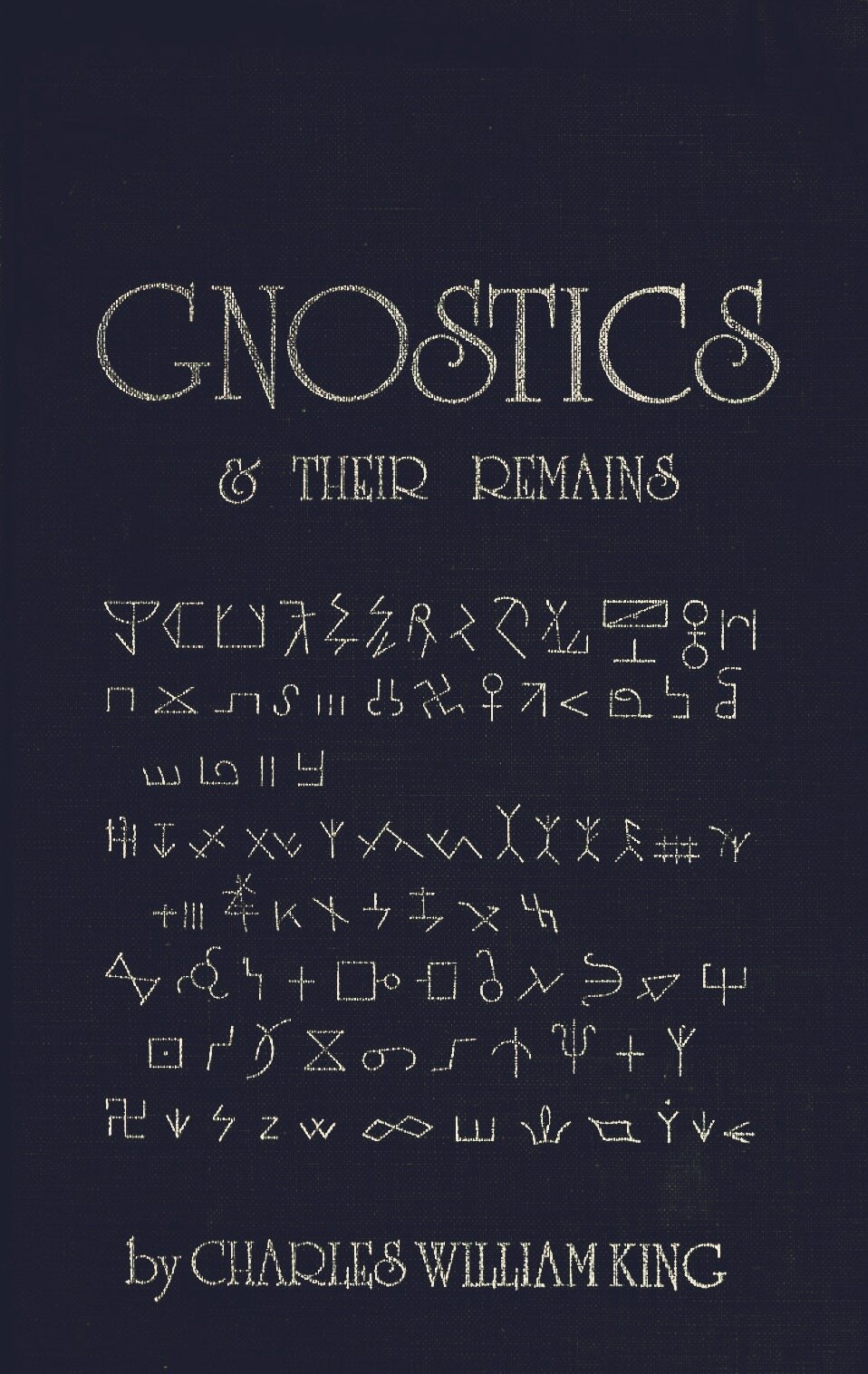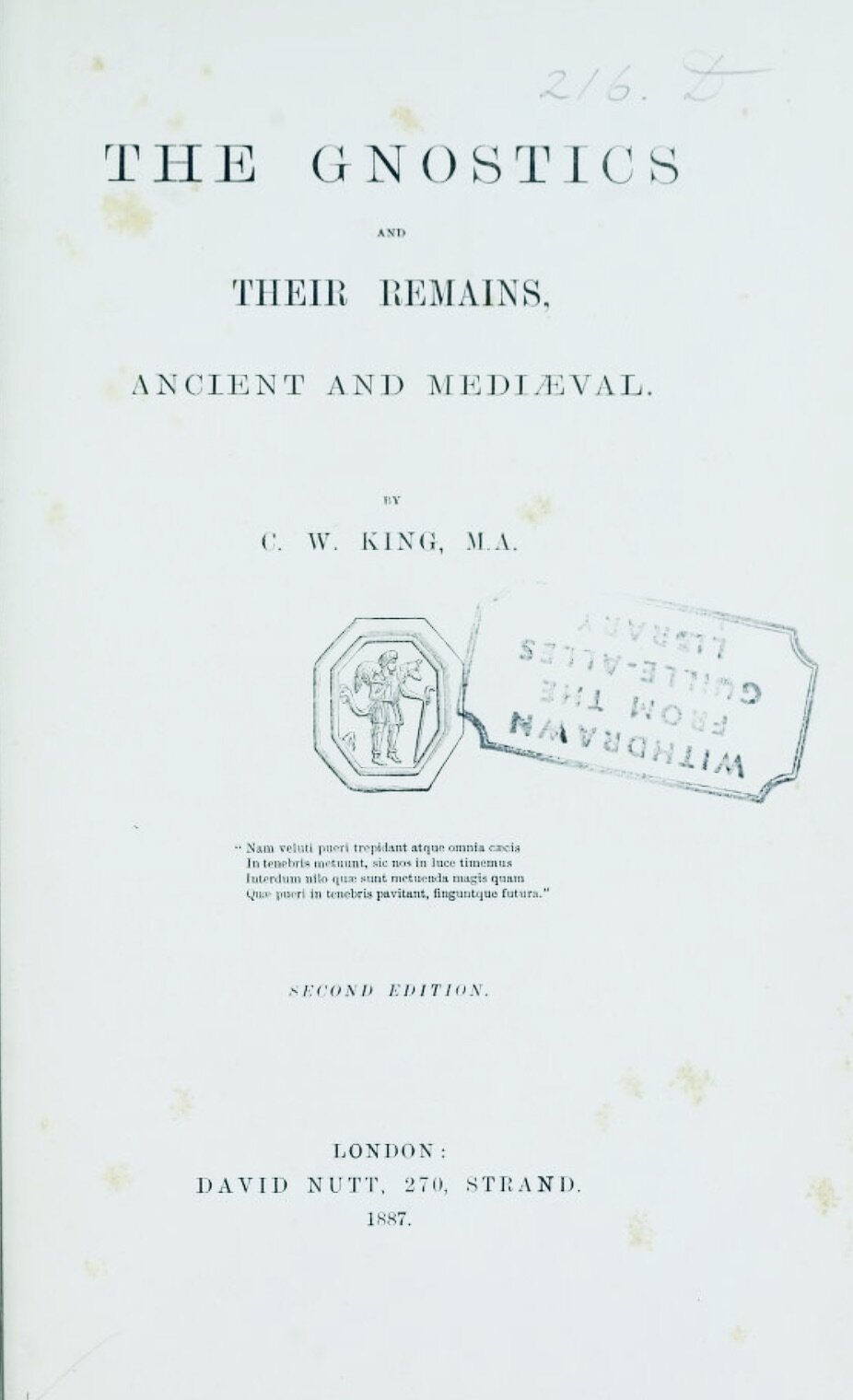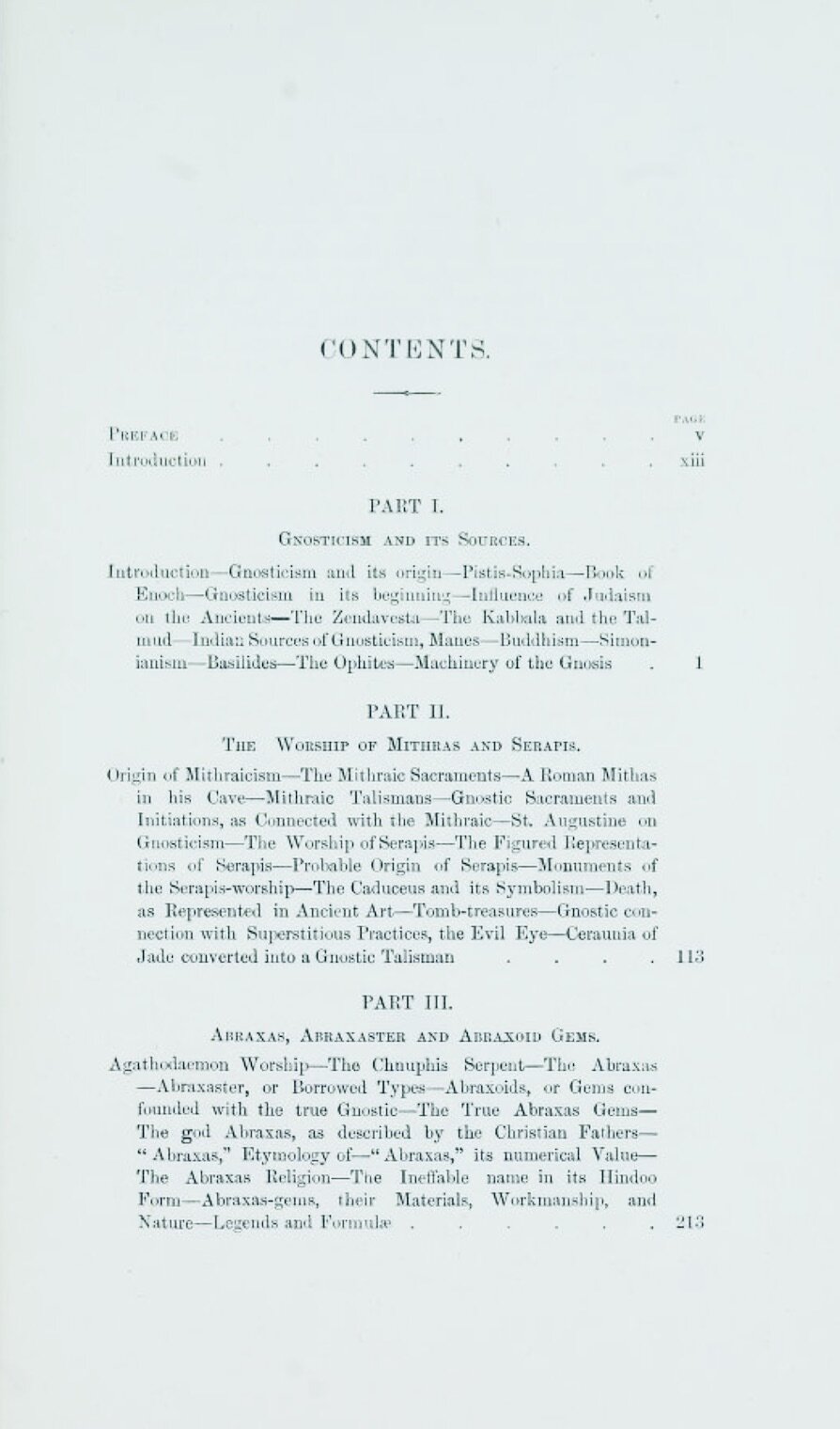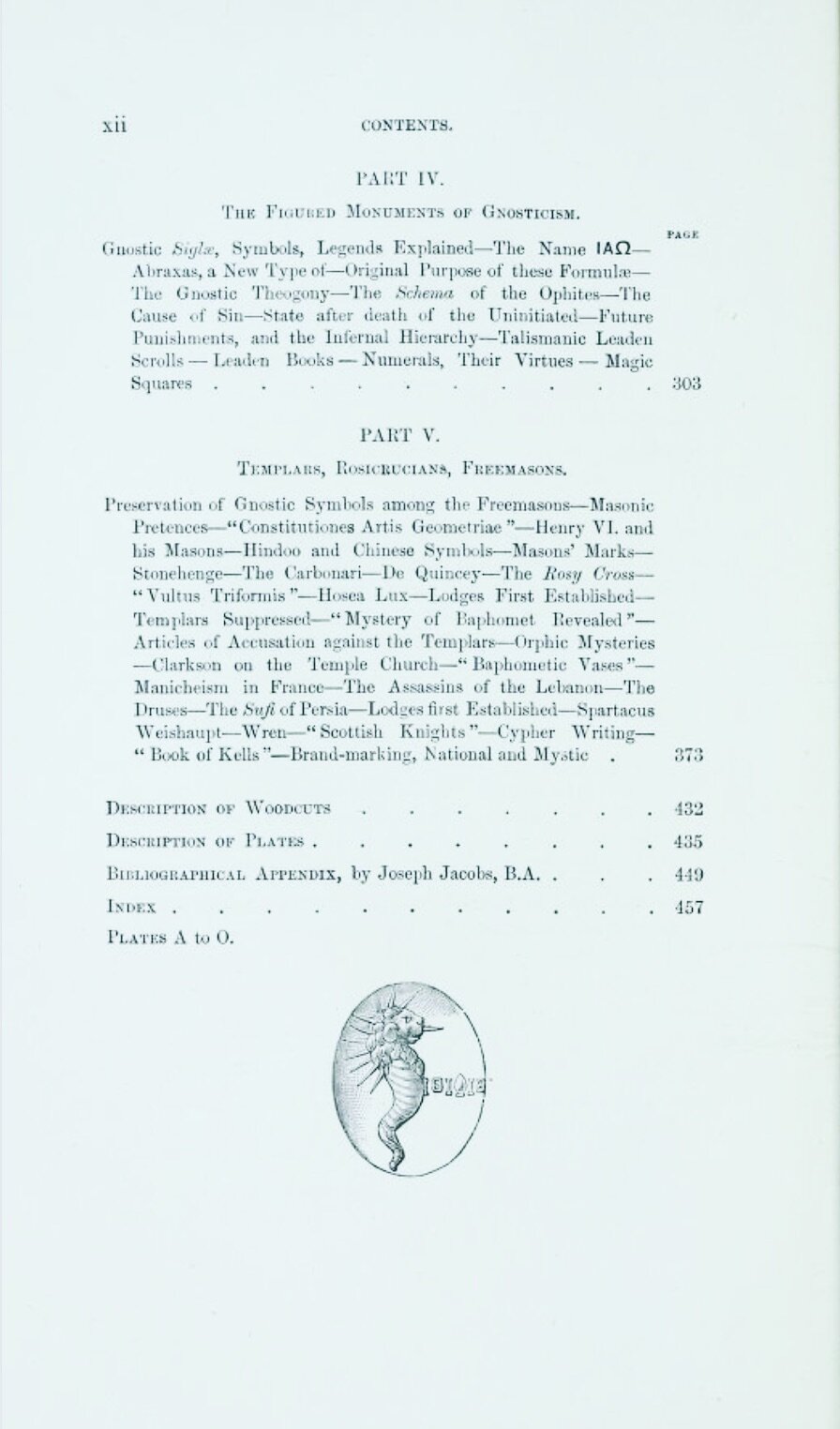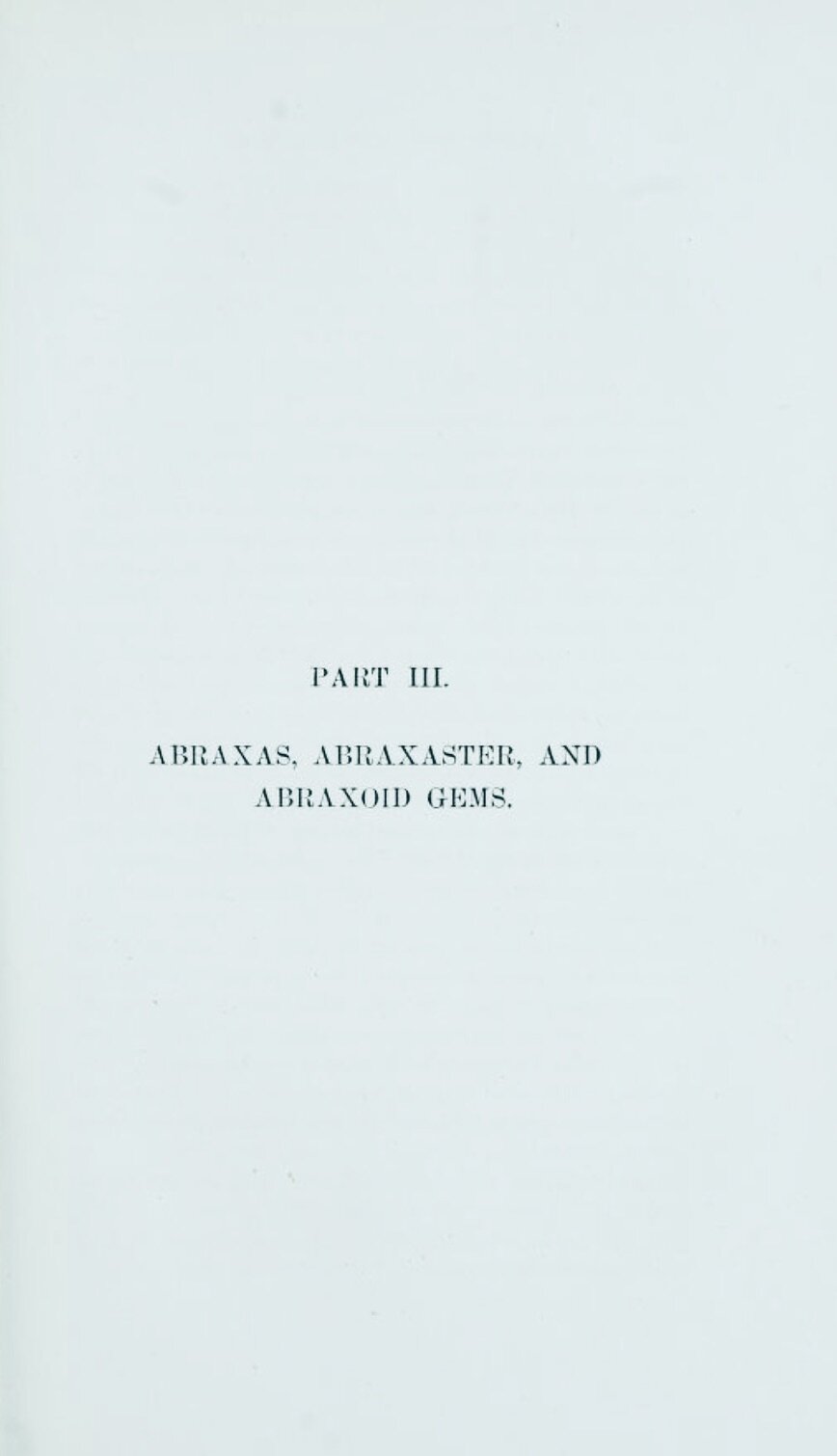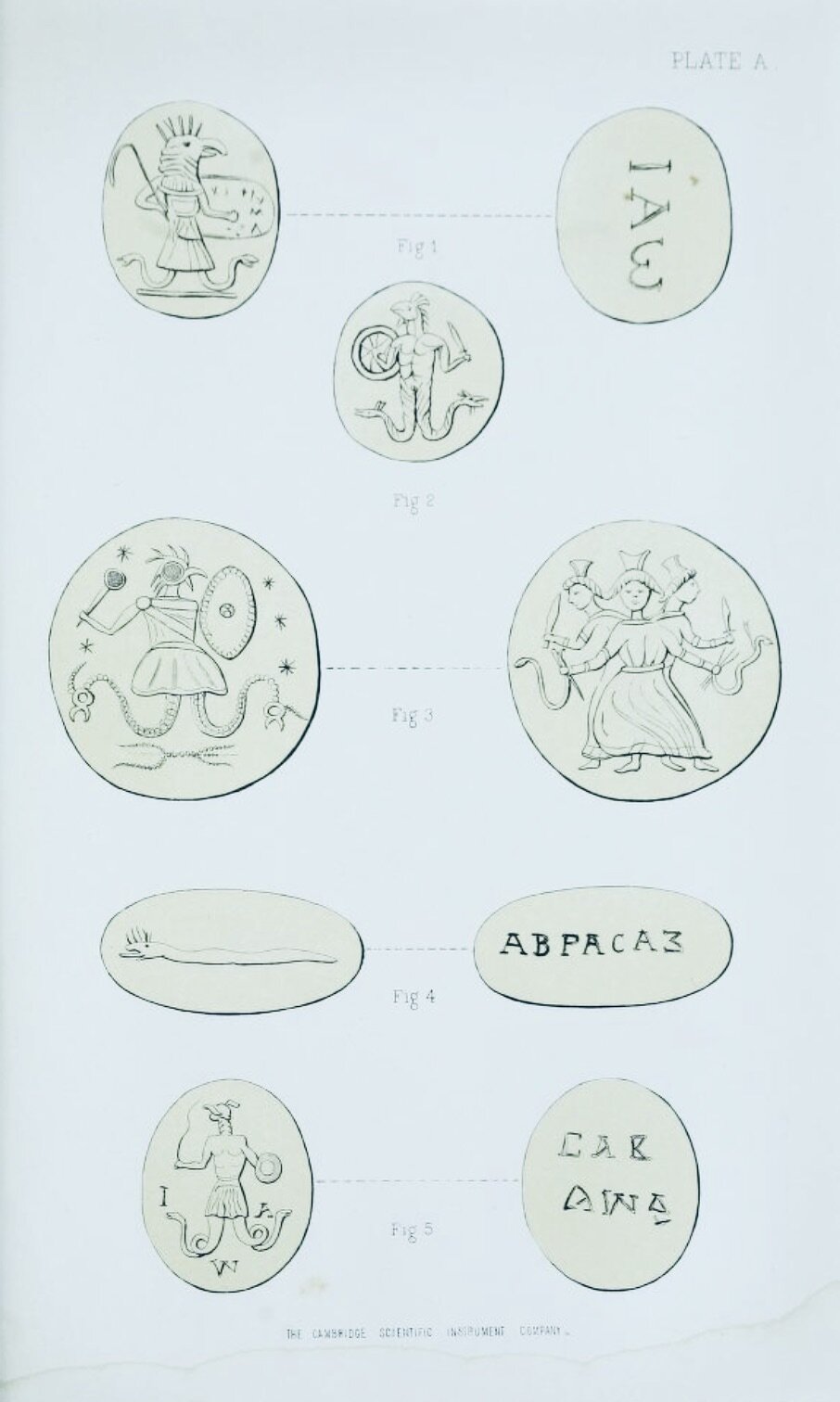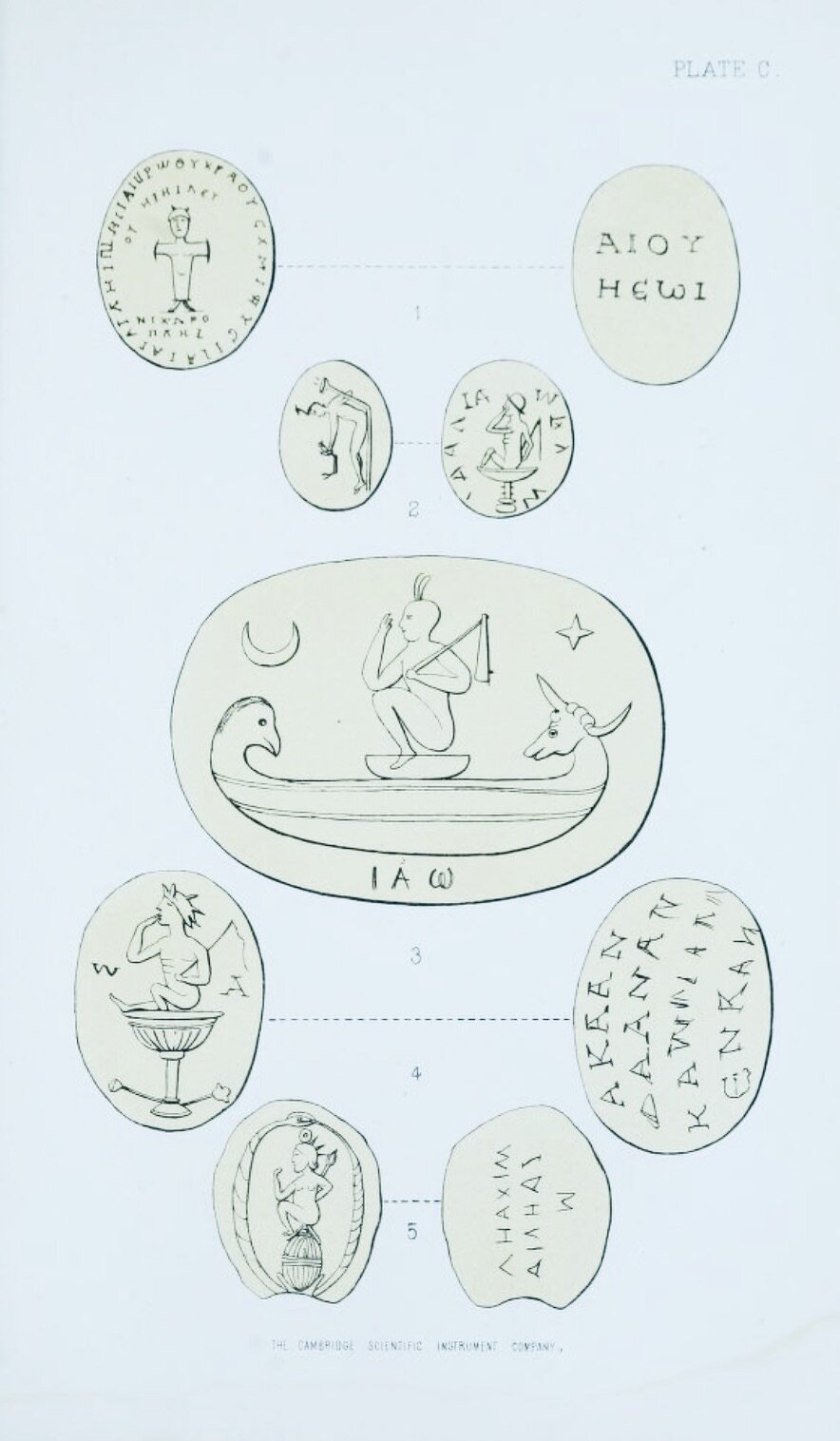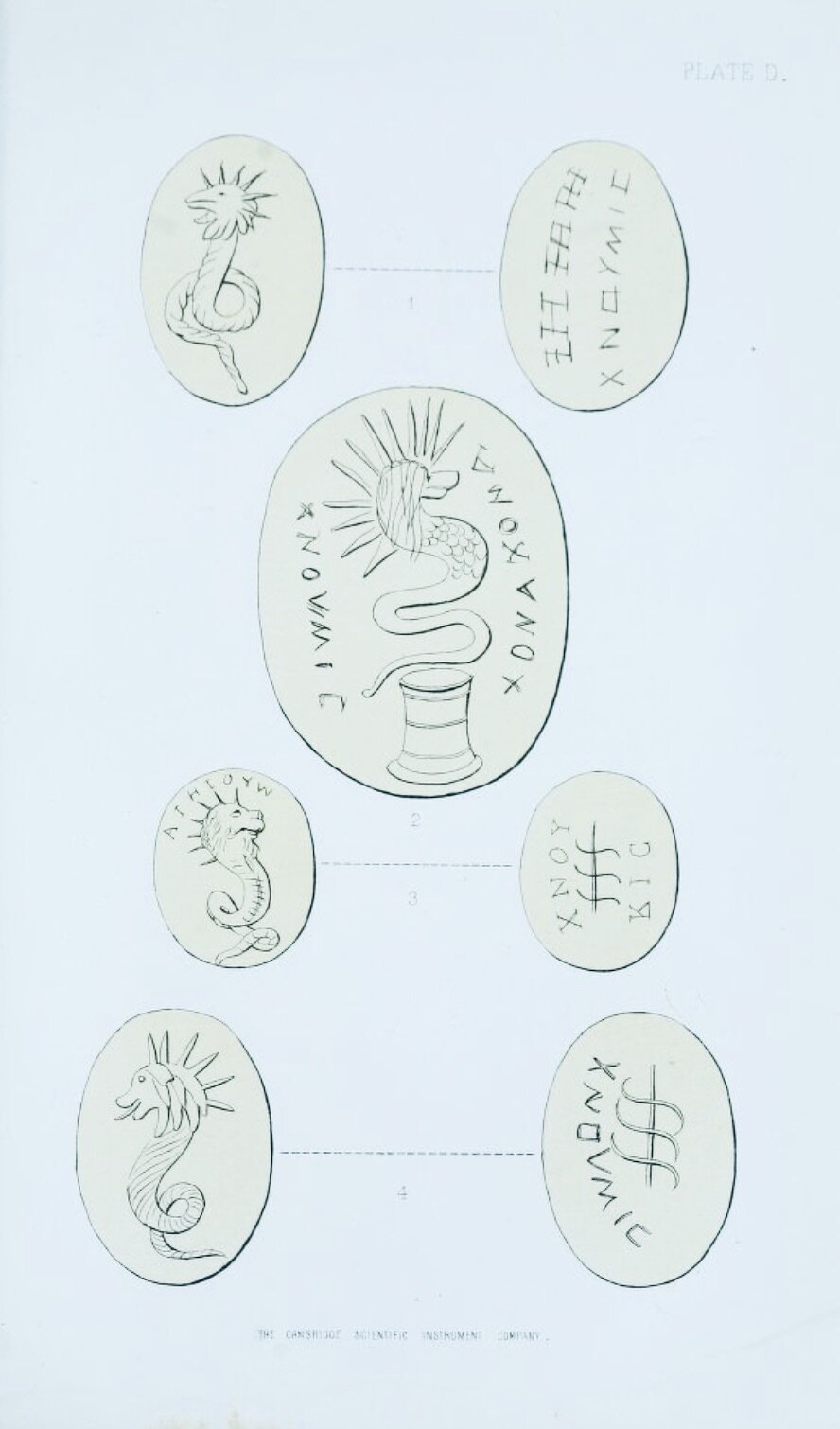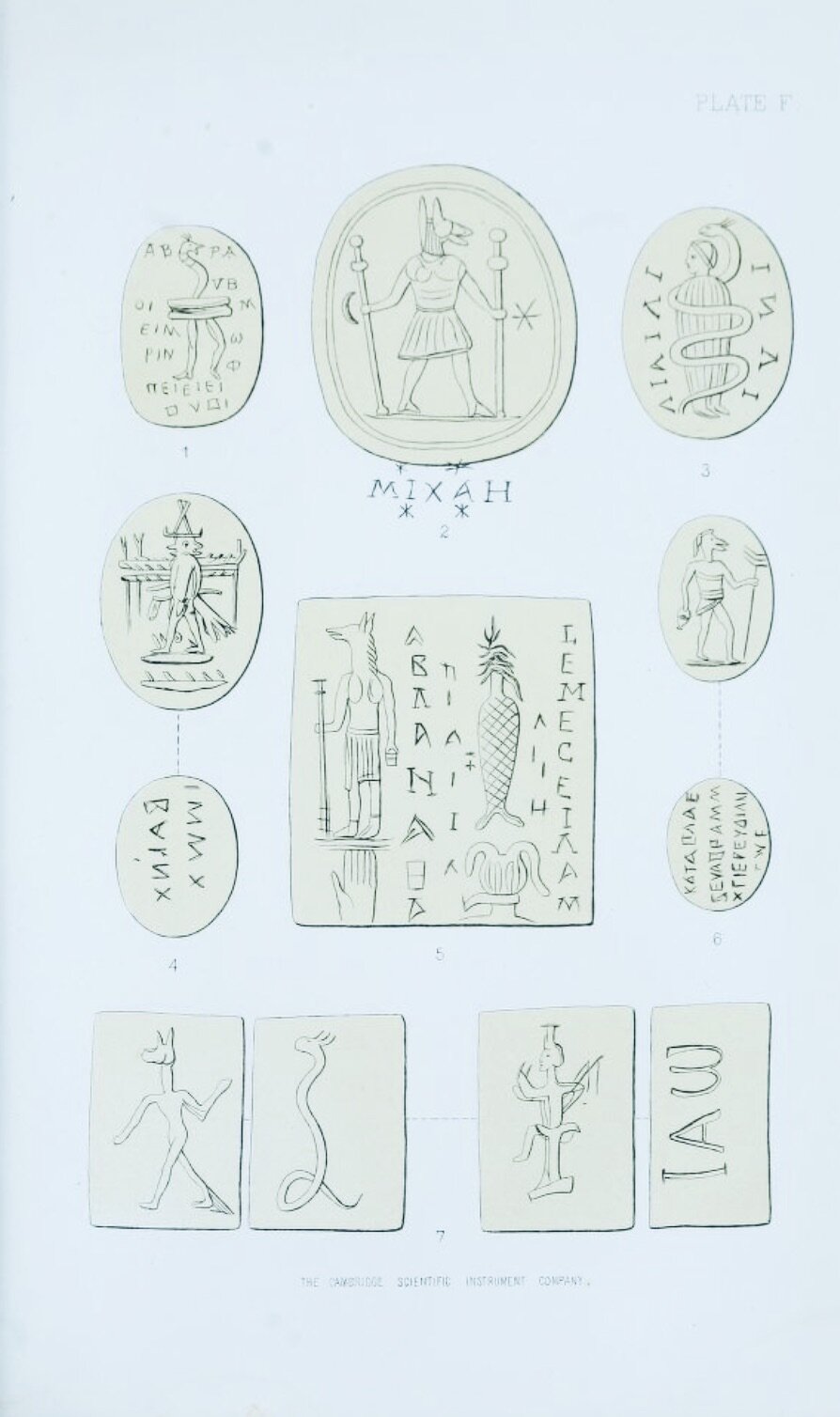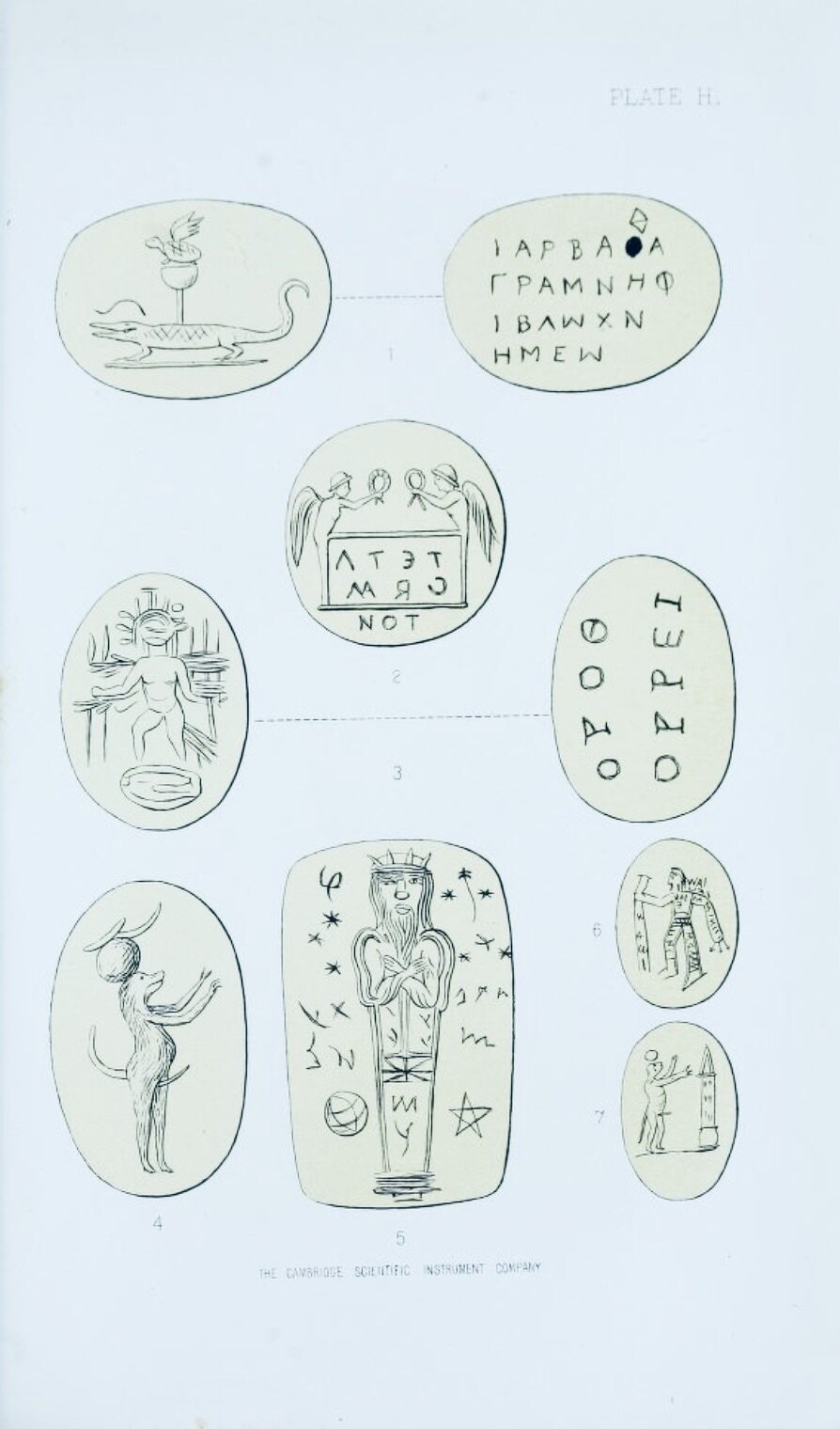‘The Gnostics and their Remains’ by C.W. King
Review: Charles William King, The Gnostics and their Remains: Ancient and Mediaeval, David Nutt, London 1887 (1864), 528 pages
Let’s start by bluntly acknowledging that this is not a good introductory book on the topic of Gnosticism. It is, however, a valuable book if one wants to deepen their knowledge of the subject. And it is certainly an interesting document for its historiography and for taking a closer look not only at the Gnostics, but at their physical artefacts.
The author, Charles William King (1818 – 1888) was a Victorian Cambridge scholar, who specialised in ancient gems. His works deal with ancient glyptic, early Christian numismatics and, as it relates to the one at hand, with gnostic gems. King went to Italy in 1842 and collected antique gemstones between 1845 and 1877, which were later donated to the Metropolitan Museum of Art in New York.
Despite his voluminous work on Gnosticism, there is no information about him having any specific relation or interest in the occult which flourished in Britain during his lifetime. In the last chapter of the present work, however, King speaks about Freemasons, Rosicrucians and Templars, which he all seems to regard with a general disdain. His view on the Middle Ages and the Byzantine Empire was similar, describing it as full of “gloomy superstition” (p. 184) while tagging the Gnostic gems as themselves as suffering from an “unmitigated barbarism” (King, p. 275). Thus, we can intuit that his is more the work of a classicist in the vein of the 18th century rather than one at the end of the 19th century, when he happened to live and when Britain and other European countries experienced a now well studied revival of all things occult.
As a modern reader of Kings work, his biography is giving us an important clue on how to approach this book. King was able to study the remains of the gnostics first-hand through his private collection, yet his analytical view is entirely the one of a classical scholar of history and art. His intent is to expand the horizon back into time and to gain a better understanding of what led to the emergence of these fascinating artefacts. What he is explicitly not interested in, is to merge or compare his academic findings with occult interpretations or trends of his time. The latter is left to our own practice and examination.
With this in mind, we will take a look at some of the significant contributions to the study of Gnosticism King made in his book. As the title says, these are focussed in particular on their remains as we encounter them in their beautiful magical gemstones. Today these are dispersed through different museum cabinets around the world, and rarely shown to the public, for their meanings are obscure and their craftsmanship rudimentary. The confusion around them already begins with their name. Often times the entire category of Gnostic gemstones is referred to as Abraxas stones. This means, even the ones that do not depict the entity known under the same name - i.e. the mythical gnostic being often depicted as a human torso with the head of a rooster and a serpent double tail - are categorised under this very label. Part of King’s effort was to clear up this confusion and to introduce a more specific terminology for the respective artefacts.
We will anchor our review by following his suggested threefold terminology, as there is much to learn about the characteristics and variations of these tiny magical paraphernalia, speaking to us over an ocean of almost two millennia of time. In the following we will therefore select and summarise a few of the most interesting concepts and criteria which King’s book unveils for the understanding of the magical gemstones.
The author suggests to catalogue them in the following way:
1. Abraxas
The Pantheos, the above mentioned composite bird with the body of a man, and characteristically serpent legged (Anguipes). Its invention is attributed to Basilides, the Gnostic heresiarch of Alexandria. The most striking fact that the book elucidates is that the actual name written on the gemstones is not even Abraxas, but it is Abrasax. And so it can be found in Gnostic text discovered at Nag-Hammadi and even in some of the Greek Magical Papyri.
“The Latin Fathers to suit the genius of their own language have transposed the final letters.” (King, p. 245)
It was caused by confusing the Greek letter Σ with Ξ. The inscriptions on the gemstones are very rough carvings and as such, they could have fostered such misreading. This confusion has lasted considerable time, and so the name “Abraxas” appears as such in Hermann Hesse’s Demian and Jung’s Septem Sermones, and the Gnostic rooster entered popular culture in its misspelled version!
Names more commonly found on these particular gems are the Gnostic IAO, or titles for Jehova such as Adonai and Sabaoth. The role of Abrasax as a solar deity, lord of the 365 heavens and identified with Helios, is an interesting aspect that King works upon, and even in some gemstones the Pantheos can be seen riding the solar chariot.
2. Abraxaster
This is the name given to the gems that represent types, gods and iconographies that were adopted by the Gnostics from older religions, as is the case with the depictions of Anubis and Hermes in different levels of syncretism, or Harpocrates, the child-Horus rising from a lotus or riding a boat. Other examples depict Serapis (the tutelar god of Alexandria) or gemstones related to the cult of Mithras, which had an influence on Gnosticism as they were their contemporaries, and receive their own chapters in the book.
3. Abraxoids
Gems that depict older deities, be it from Rome, Egypt, or Babylon, and have no actual connection to Gnosticism but are usually presented as such. This is a historiographic and bibliographic problem for which this book is a valuable contribution. Books dealing with the occult in a miscellaneous way carelessly reproduce ancient gems as Gnostic, and this might not even be a modern problem only. Reproductions of Abraxas gems were made during the Renaissance and in a much higher quality than the originals, and catalogues as the one by Macarius (1657) might be full of these confusions.
King’s style is particularly difficult and abstruse, and this is partly because he was a Victorian writer. The main problem is his quoting style, and if one is not familiar with the sources he uses, it can be utterly confusing. On top of this, he quotes in Greek, Latin and even Hebrew often without translation which can be quite uncomfortable for the modern reader.
His sources are the works of the Apologetic Church Fathers (Hippolytus, Irenaeus, Origen, Tertullian, Epiphanius etc.) as well as the Gnostic scriptures which were known at his time like the Pistis Sophia and the Codex Brucianus. This is interesting from an historiographic point of view since it is a comprehensive work done before the discovery of the Nag-Hammadi library. King takes as a given that the reader is familiar with all the classics of antiquity, which he uses and quotes profusely to put Gnosticism in context. For in his words:
“The Gnostics did not invent- they merely borrowed and applied.” (King, p. 171)
Thus, the problem with the study of Gnosticism is always its highly syncretistic nature, and so the iconography of the gemstones is eminently derived from Egypt.
“Yet it is Egyptian art which has furnished it with the greatest part of its symbols.” (King, p. 215)
On top of this, an unexpected turn, is that he puts forward the hypothesis that Gnosticism was in fact influenced by Indian sources. He is adamant and even repetitive with this idea, which is mainly that:
“...the whole Gnostic system is derived, not from the Kabbala, nor from the Greek philosophy, but from the theosophy of the Brahmins.” (King, p. 262)
Let us not forget that Hippolytus’ claim for refuting the Gnostics was that they derived everything from Greek philosophers, and therefore lacked divine inspiration in the Christian sense. The use of the term “theosophy” in 1887 is not an empty detail either. The comparison between Gnosticism and Indian religions does not exist in a vacuum, but it can not go beyond finding parallels in religious patterns and ideas, no genealogy between the two can be fully proved. This was later developed, for example, by Edward Conze in “Buddhism and Gnosis” (1966). Yet King’s ideas and opinions sometimes go way beyond what can be proved and must be read with a critical eye, as, for example, when he states that:
“It might even be suggested that Indian influence shines through the whole Apocalypse.” (King, p. 264)
Furthermore, King was certainly not an Indologist, and his approach to such sources, methodology and transcriptions can be questionable.
The author was an expert on the gemstones of antiquity, and this is his only work on the topic of Gnosticism which, given the due patience, can open a wonderful gate to the world of ancient glyptic. Some chapters are, like the “Abraxoid” gems, miscellaneous and not even related to Gnosticism at all, reminding one of the works of an erudite in the old style, full of wonderful and disordered knowledge. Such is the case with “The Caduceus and its Symbolism”, “Death, as Represented in Ancient Art”, or “Tomb Treasures” which can be read by themselves as short imaginative essays on symbolism and iconography.
Selected Resources
Further reading:
Conze, Edward (1967), "Buddhism and Gnosis", in Bianchi, U. (ed.), Origins of Gnosticism: Colloquium of Messina, 13–18 April 1966.
Verardi, Givanni (1997), "The Buddhists, the Gnostics and the Antinomistic Society, or the Arabian Sea in the First Century AD", AION, 57 (3/4): 324–346.
Klimkeit, Hans-Joaquim (1993), Gnosis on the Silk Road: Gnostic Parables, Hymns & Prayers from Central Asia, Harper San Francisco.

